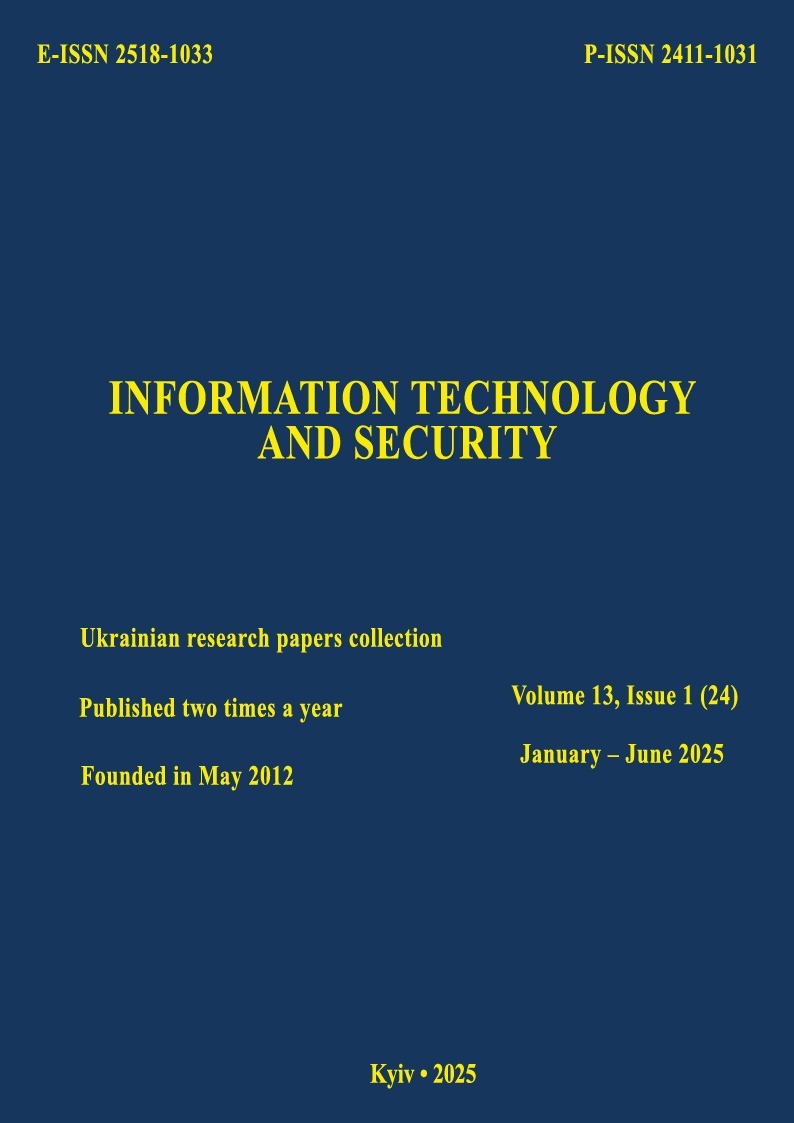Application of large language models for intelligent expansion of semantic networks
DOI:
https://doi.org/10.20535/2411-1031.2025.13.1.328970Keywords:
semantic networks, large language models (LLM), cybersecurity, OSINT, text analyticsAbstract
This paper proposes a methodology for constructing and further expanding semantic networks based on text analysis using large language models (LLM). The initial semantic network is expanded with the help of GPT-4, Llama-3, and DeepSeek-V3, and the obtained results undergo quantitative evaluation of precision and recall. The proposed semantic networking technology is based on the concept of a "swarm of virtual experts", where each LLM enhances the semantic network with its own knowledge and connections. Additionally, an approach to network integration has been developed, enabling the consolidation of results from different LLMs into a unified structure. The use of a weak-link filtering mechanism enhances the reliability of the final network by eliminating false-positive connections and reducing information noise, contributing to a more accurate and complete representation of knowledge. For semantic network visualization, the Gephi software is utilized – a free and open-source network analysis and visualization tool.
References
D. Lande, and L. Strashnoy, Semantic Networking Based on Large Language Models: Monograph. Kyiv, Ukraine: “Engineering Ltd”, 2025.
D. Lande, and L. Strashnoy, “Swarm of Virtual Experts in the Implementation of Semantic Networking”, ResearchGate Preprint, Oct. 2024. [Online]. Available: https://doi.org/10.13140/RG.2.2.16686.11845. Accessed on: Jan. 15, 2025.
O. Puchkov, D. Lande, I. Subach, and O. Rybak, “Integration of information search technologies and artificial intelligence in the field of cybersecurity”, Information Technology and Security, vol. 11, no. 2, pp. 206-215, 2023, doi: https://doi.org/10.20535/24111031.2023.11.2.293789.
N. Ding, W. Mayer, Y. Geng, Y. Duan, and Z. Feng, “Generative semantic modeling for structured data source with large language model”, in Proc. 2023 IEEE Int. Conf. on High Performance Computing & Communications, Data Science & Systems, Smart City & Dependability in Sensor, Cloud & Big Data Systems & Application (HPCC / DSS / SmartCity / DependSys), Melbourne, Australia, 2023, doi: https://doi.org/10.1109/hpcc-dss-smartcitydependsys60770.2023.00164.
D. Lande, and L. Strashnoy, “Concept networking methods based on ChatGPT & Gephi”, SSRN Electronic Journal, 2023, doi: https://doi.org/10.2139/ssrn.4420452.
R. Jeyaram, R. Ward, and M. Santolini, “Reconstructing networks from text using Large Language Models (LLMs)”, in Proc. 12th Int. Conf. on Complex Networks and their Applications, Menton, France, 2023. [Online]. Available: https://hal.science/hal-04514924v1. Accessed on: Jan. 15, 2025.
Downloads
Published
How to Cite
Issue
Section
License
Copyright (c) 2025 Collection "Information Technology and Security"

This work is licensed under a Creative Commons Attribution 4.0 International License.
The authors that are published in this collection, agree to the following terms:
- The authors reserve the right to authorship of their work and pass the collection right of first publication this work is licensed under the Creative Commons Attribution License, which allows others to freely distribute the published work with the obligatory reference to the authors of the original work and the first publication of the work in this collection.
- The authors have the right to conclude an agreement on exclusive distribution of the work in the form in which it was published this anthology (for example, to place the work in a digital repository institution or to publish in the structure of the monograph), provided that references to the first publication of the work in this collection.
- Policy of the journal allows and encourages the placement of authors on the Internet (for example, in storage facilities or on personal web sites) the manuscript of the work, prior to the submission of the manuscript to the editor, and during its editorial processing, as it contributes to productive scientific discussion and positive effect on the efficiency and dynamics of citations of published work (see The Effect of Open Access).

